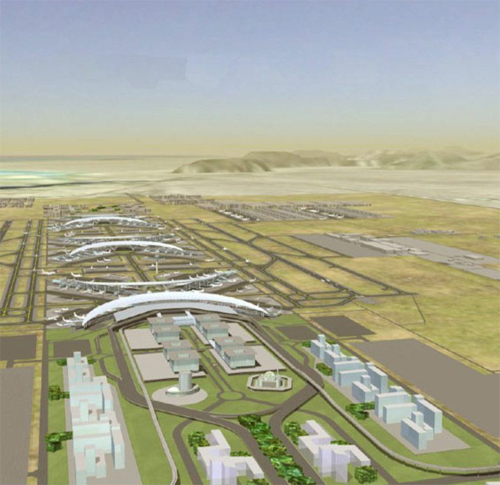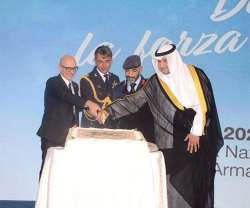Work on the new state-of-the-art King Abdulaziz International Airport (KAIA) in Jeddah is 88% complete and the airport will start experimental operation in the beginning of next year, an official has been quoted as saying.
As many as 21,000 engineers and workers belonging to 110 companies are racing against time to complete the first phase of the project, said Ibrahim Mandoura, Director General (planning and studies) of the General Authority of Civil Aviation (GACA), in a Saudi Gazette report.
Following the completion of the SR27 billion ($7.2 billion) project, KAIA will become one of the largest aviation hubs in the world. It will be a smart, environment-friendly, unique landmark of the Arab and Islamic architecture.
Located 19 km north of Jeddah city, the airport boasts one of the tallest control towers in the world, with a height of 136 m. In the first phase, the airport will handle 30 million passengers per annum, the report said.
“With the completion of the second phase, the airport will be able to handle 55 million passengers, and 100 million following the third and final phase. So far 88 percent of the works have been completed and the airport would serve 36.5 percent of the total passengers using Saudi airports,” he said.
Spanning over an area of 810,000 square meters, the airport complex will have two new terminals for domestic and international passengers, allowing all airlines to operate under one roof. It includes passenger lounges, a new concourse building with 25 additional passenger bridges and connector buildings linking the terminals, air bridges and movable gates, apron and taxiway modifications and extensions, electrical and mechanical systems and extension.
A total of 27,987 square meter area has been earmarked for commercial investment purposes.
The terminal consists of 220 standard check-in counters for all airlines, 80 self-service machines for airlines, 56 passport control counters for departure and 72 counters for arrival, 117 passport self-service machines, 46 gates for domestic and international passengers, 94 aerobridges, 42 waiting lounges for international flights and 24 for domestic flights, four waiting lounges for senior citizens, five lounges for first class and business class passengers, and automatic train system for the transport of international passengers.
The public transport center is another major highlight of the new airport. The integrated center is situated between the airport terminal complex and multi-storey parking building. The terminal is linked with parking areas, Haramain station, metro station, taxi and bus stations.






















